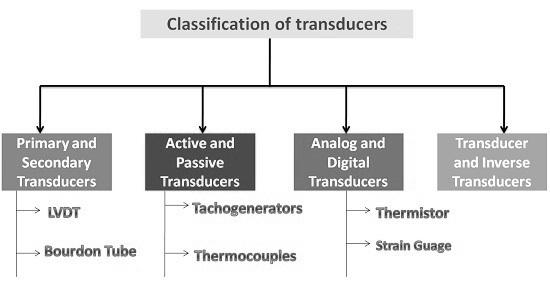Primary vs. Secondary Transducers: A Detailed Explanation
Advertisement
When we talk about transducers, we’re referring to devices that convert one form of energy into another. In many measurement systems, this conversion often happens in stages. This is where the concepts of primary and secondary transducers come into play. Let’s break down the difference between these two types.
Primary Transducer: The Initial Conversion
A primary transducer is the device that directly interacts with the physical quantity being measured. It converts this physical quantity into a mechanical displacement or deformation. Think of it as the first step in the transduction process.
- Key Characteristic: It transforms a physical phenomenon (like pressure, force, or temperature) into a mechanical movement.
- Nature: Primarily a mechanical device.
- Example: Imagine a pressure sensor using a Bourdon tube. The pressure deforms the tube, creating a mechanical movement. This Bourdon tube is the primary transducer. Other examples include:
- Diaphragms
- Bellows
Secondary Transducer: Converting to Electrical Signals
A secondary transducer takes the output of the primary transducer (typically a mechanical displacement) and converts it into an electrical signal. This electrical signal is often easier to process, transmit, and display. It’s the bridge from mechanical movement to a measurable electronic output.
- Key Characteristic: It transforms a mechanical displacement into an electrical signal.
- Nature: Primarily an electrical device.
- Example: Following the pressure sensor example, after the Bourdon tube deforms, its movement could be connected to a Linear Variable Differential Transformer (LVDT). The LVDT then converts that mechanical movement into a change in voltage, which we can then measure. The LVDT is the secondary transducer.
A Practical Analogy
Think of a traditional weighing scale:
- The platform you stand on is the primary transducer. It converts your weight (a force) into a mechanical displacement (the movement of the scale mechanism).
- The gears and linkages inside the scale convert that displacement into the movement of the needle on the dial (if it were analog) or a signal going to an electronic display (if digital)
- In a digital scale the LVDT or other type of sensor converts that mechanical motion into an electrical signal. This is the secondary transducer.
Classification of Transducers
As illustrated in the image below, transducers can be classified in several ways, including:
- Active and Passive: Active transducers generate their own output signal (like a piezoelectric sensor), while passive transducers require an external power source.
- Analog and Digital: Analog transducers output a continuous signal, while digital transducers output discrete values.
- Primary and Secondary: As we’ve discussed, this classification is based on the role they play in the measurement process.
- Transducer and Inverse Transducer: A transducer converts a non-electrical form of energy into an electrical form, while an inverse transducer converts electrical energy into a non-electrical form.

Key Differences Summarized
| Feature | Primary Transducer | Secondary Transducer |
|---|---|---|
| Conversion | Physical quantity to mechanical motion | Mechanical motion to electrical signal |
| Primary Nature | Mechanical | Electrical |
| Role | Initial detection and conversion | Conversion to usable signal |
| Examples | Bourdon tube, diaphragm, bellows | LVDT, strain gauge, capacitance sensor |
In summary, primary transducers are the front line of measurement, directly sensing the physical quantity, while secondary transducers convert the resulting mechanical motion into electrical signals that can be further processed and interpreted. Together, they form the backbone of many measurement systems.
Conclusion
The primary difference between primary and secondary transducers lies in their method of signal conversion:
- Primary transducers directly convert physical quantities (e.g., pressure, temperature) into electrical signals. Example: Thermocouples and strain gauges.
- Secondary transducers require an intermediate conversion stage. They receive the output from a primary transducer and further process it. Example: LVDT (Linear Variable Differential Transformer), where mechanical displacement is converted into electrical signals.
Understanding these distinctions helps in selecting the appropriate transducer for applications in automation, medical devices and industrial measurement systems.
Advertisement
 T&M
T&M 






